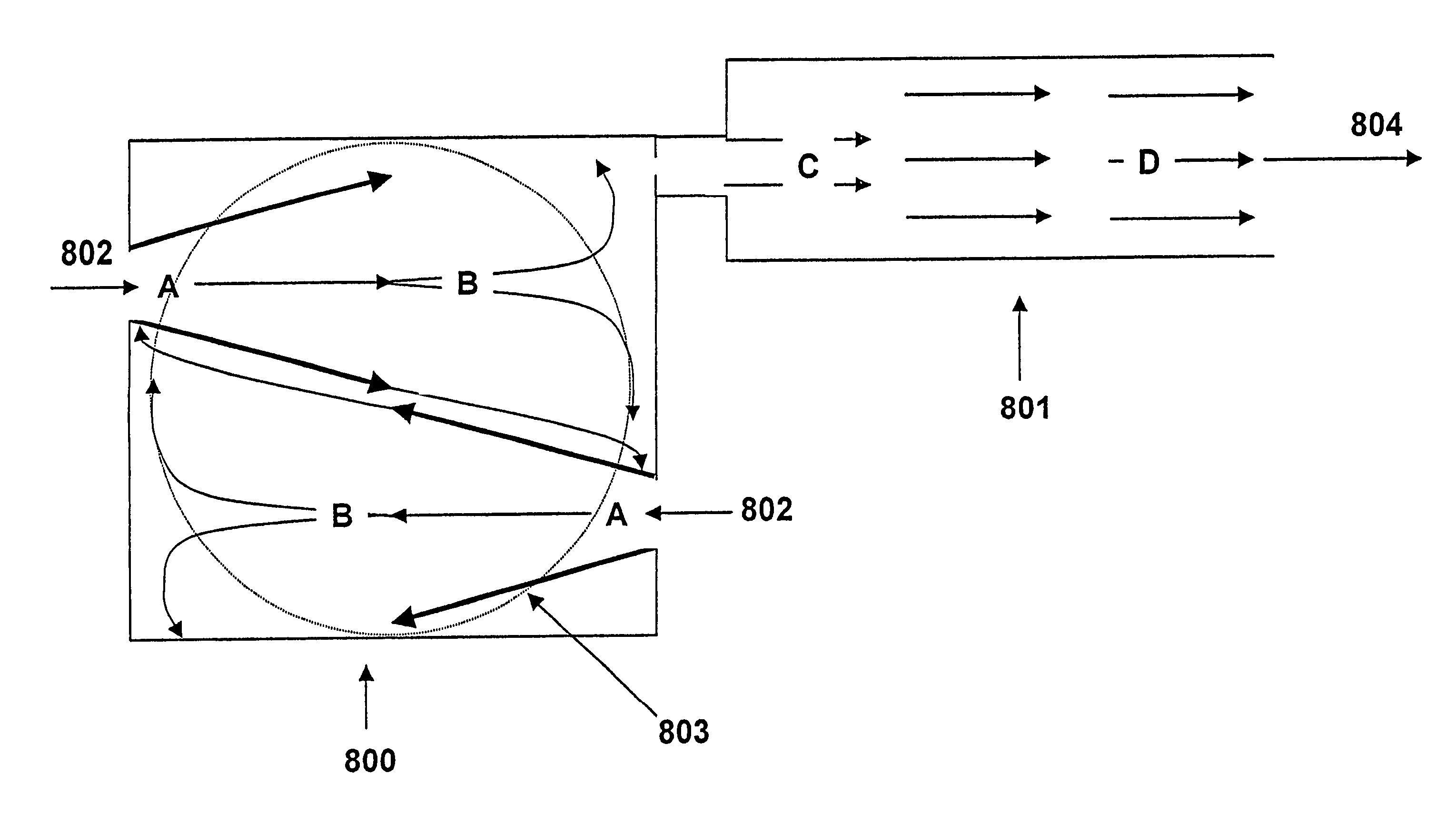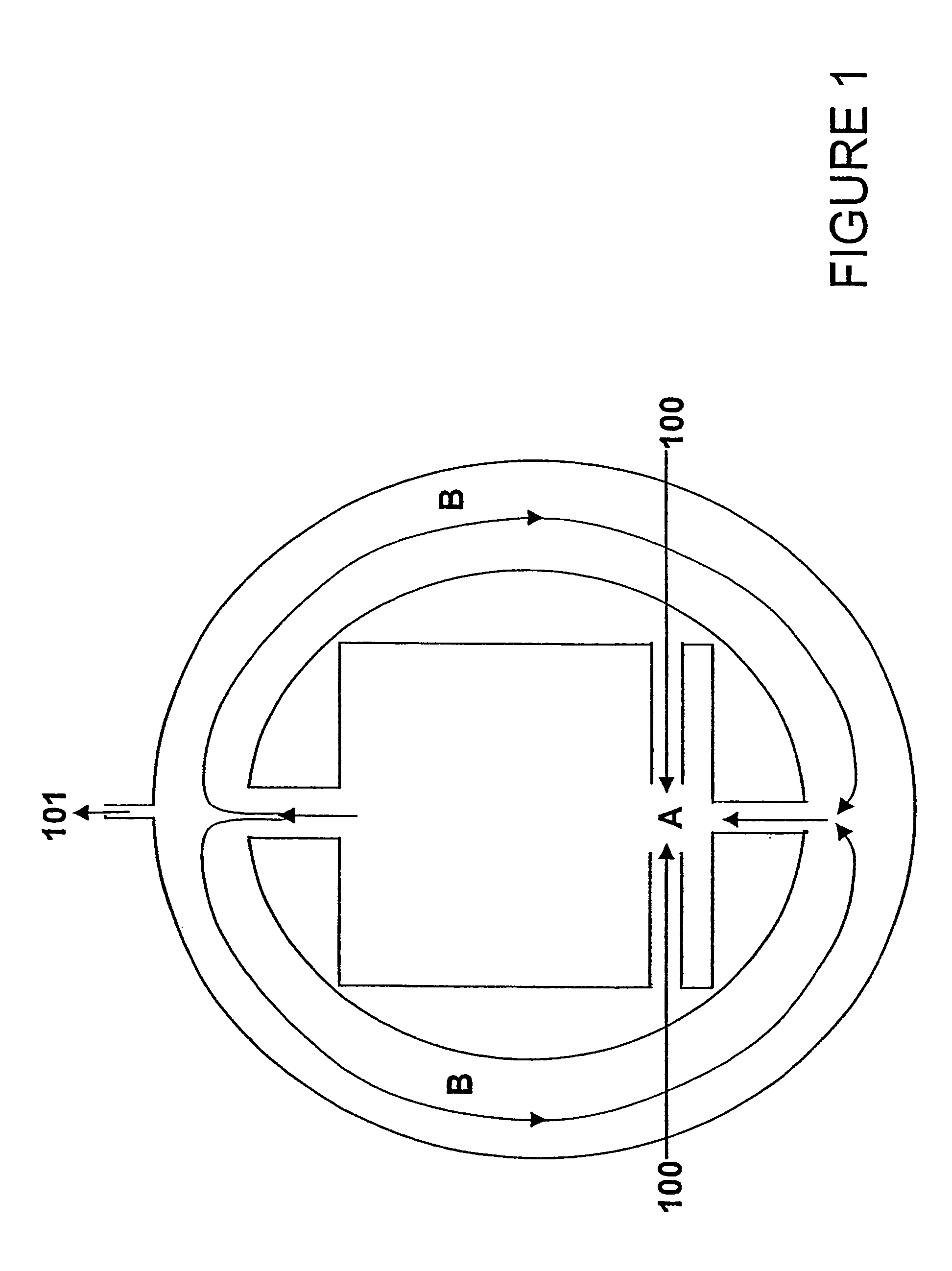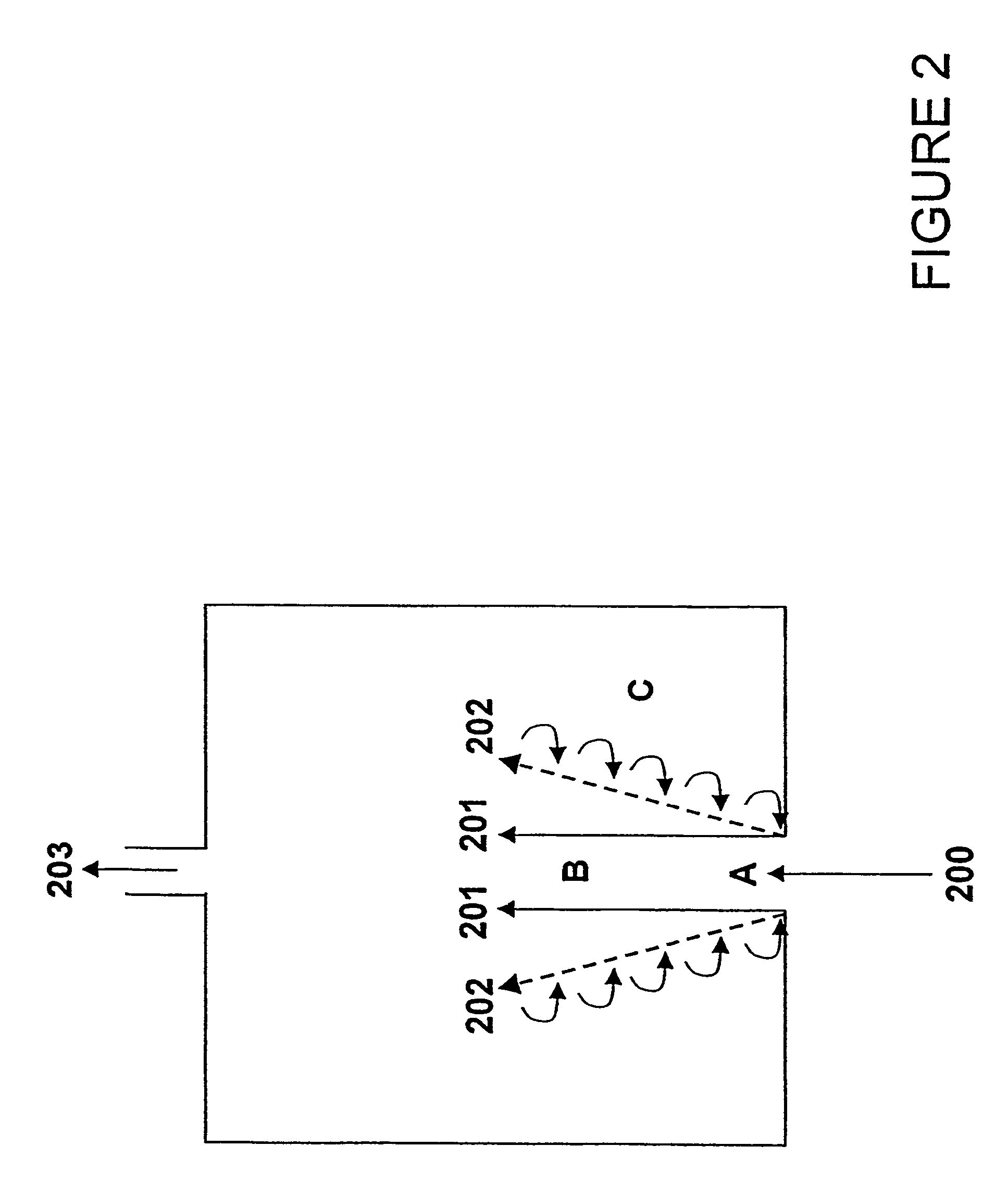Method for combustion synthesis of fullerenes
a technology of fullerene and combustion synthesis, which is applied in the field of combustion synthesis of fullerene, can solve the problems of severely limiting the degree of freedom available for configuring and optimizing the flame for particulars, and affecting the so as to achieve the effect of enhancing the amount of entrainment of the second feed
- Summary
- Abstract
- Description
- Claims
- Application Information
AI Technical Summary
Benefits of technology
Problems solved by technology
Method used
Image
Examples
example 1
[0075]A primary zone is used coupled to a secondary zone, the effluent of which proceeds to a collection device as described in U.S. Provisional Application No. 60 / 393,494. The primary zone consists of a short cylindrical chamber where 34, 0.02″ openings to allow the addition of gases are positioned at opposite faces or ends of the cylinder, so as to form jets, each jet pointing at the other face. The jets of each face are positioned so as to be equidistant from the center of the opposite adjacent jets, in other words, offset from the opposite jet centerlines, so as to minimize momentum loss of the entering fluid and to enhance entrainment of the opposing jets. A pre-mixed benzene (a fullerene-forming fuel), O2, Ar mixture (Ar=10% of total entering stream) at an equivalence ratio of 2.4 is used and exits the jets at a velocity of 133 m / s at a temperature of 90° C. and pressure of 40 torr. The volume of the primary zone is 460 cc, so that the average residence time in the primary zon...
example 2
[0078]The same system and conditions as described in Example 1 are used, except that the primary zone is replaced with a flame system such as described in U.S. Pat. No. 5,273,729. FIG. 12 shows results of a study of C60 concentration as a function of residence time for this system. It can be seen that the concentration of fullerenes in this example far exceeds the conventional synthesis method. The improved performance results from the ability to allow for longer residence times at controlled temperature. This example is limited to a lower throughput than Example 1, because of the stability limits of the conventional flame which feeds the secondary zone.
example 3
[0079]The same system is used as described in Example 1, except that the effluent of the primary zone proceeds to a collection device as described in U.S. Provisional Application No. 60 / 393,494.
PUM
| Property | Measurement | Unit |
|---|---|---|
| pressure | aaaaa | aaaaa |
| temperature | aaaaa | aaaaa |
| residence time | aaaaa | aaaaa |
Abstract
Description
Claims
Application Information
 Login to View More
Login to View More - R&D
- Intellectual Property
- Life Sciences
- Materials
- Tech Scout
- Unparalleled Data Quality
- Higher Quality Content
- 60% Fewer Hallucinations
Browse by: Latest US Patents, China's latest patents, Technical Efficacy Thesaurus, Application Domain, Technology Topic, Popular Technical Reports.
© 2025 PatSnap. All rights reserved.Legal|Privacy policy|Modern Slavery Act Transparency Statement|Sitemap|About US| Contact US: help@patsnap.com



